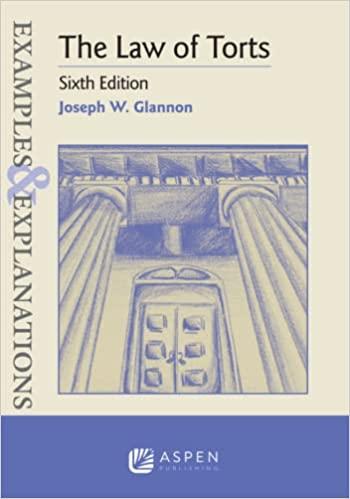Question
Prior to 1969, the telecommunications industry was regulated as a lawful monopoly. Local exchange service was and still is provided exclusively by one of the
Prior to 1969, the telecommunications industry was regulated as a lawful monopoly. Local exchange service was and still is provided exclusively by one of the twenty-three Bell System operating companies or by one of some 1600 independent telephone companies, depending upon the geographical area involved.[8]Long distance service was provided by the Long Lines Department of AT & T in partnership with these operating companies.[9]The network of long distance transmission facilities was owned in substantial part by Long Lines; however, the interexchange facilities of the local telephone companies, including both transmission and switching facilities, were used in conjunction with Long Lines facilities whenever efficiency required. The local exchange facilities and switching machines belonging to the local companies were also used at each end of a regular long distance call.
Question 11
When examining a patient's carotid pulse, why should we not palpate
both carotids at once? Is it because it might block the blood supply to the
brain?
Question 12
How can I differentiate between jugular and arterial pulsation in the neck
practically?
Question 13
Can you please help me with this: 'Thrusting due to mitral or aortic
regurgitation. Heaving due to aortic stenosis and systemic hypertension.
There is often confusion about the terms thrusting and heaving'.
Another book I read considers aortic stenosis and hypertension for
thrusting and mitral/aortic regurgitation for heaving. Who should I go
with? Thank you.
Question 14
Where is the best place on the precordium to auscultate a split-second
heart sound?
Question 15
What is the mechanism by which murmurs of mitral valve prolapse
(MVP) and hypertrophic cardiomyopathy (HC) are accentuated by
standing or the Valsalva manoeuvre?
Question 16
What is the correct procedure for a fluoroscopy and why is this essential
for the insertion of cardiac catheter, pacemaker and prosthetic valve?
Question 17
What is the role of amiodarone in the acute management of asystole or
pulseless electrical activity (PEA)?
Question 18
1. Is there any contraindication to the use of microwaves or mobile
phones in patients with pacemakers?
2. What, if any, appliances should be avoided in a patient with
a pacemaker?
Question 19
1. What is tachy-brady arrhythmia in the sick sinus syndrome?
2. How can it be managed?
Question 20
Practically, how can we differentiate between a second-degree
atrioventricular (AV) block Mobitz I and Mobitz II? What is the meaning
of first-degree block? What is the difference between heart asystole, heart
arrest and third-degree AV block?13
Step by Step Solution
There are 3 Steps involved in it
Step: 1

Get Instant Access to Expert-Tailored Solutions
See step-by-step solutions with expert insights and AI powered tools for academic success
Step: 2

Step: 3

Ace Your Homework with AI
Get the answers you need in no time with our AI-driven, step-by-step assistance
Get Started


